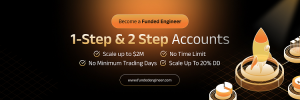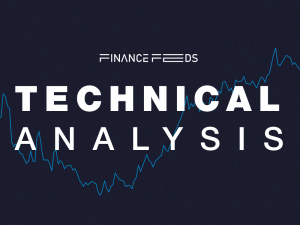An Expert Review: The challenges of cross-server technology
Brokeree Solutions’ co-founder and managing partner Andrey Kamyshanov shares insights into the future of cross-server technology.

The development of cross-server technologies is a strategic direction in the fintech industry. Stable cross-server solutions will provide brokers with various advantages, which would help to stand out among competitors. The prospects of using such technology are practically unlimited: from investment solutions and liquidity management to risk management and trading analytics, making brokers’ operations more convenient and transparent.
In an expert review, “The intricacies of multi-server technology in retail trading,” we highlighted some examples of multi-server solutions for MetaTrader 4 and 5 that have limited cross-server features. Despite such products, the implementation of robust cross-server technology proves to be a significant challenge for developers.
One of the major obstacles in this process is the difference in framework between MetaTrader 4 and 5 versions. The contrast in internal infrastructure and data collection methods don’t allow developers to transfer trade records from one platform to another without altering them. The goal of technology providers is to find out the most efficient way to transform a data set between MT4 and MT5.
In addition to the contrasts in platforms’ architectures, the operation between two MetaTrader servers may be complicated with extra delays. For instance, a brokerage provides copy trading services across several MT4s in LD4 and TY3. When a client opens a position on an LD4 server, the trade request is confirmed by a liquidity provider first. Then a copy trading solution processes the trade according to the predefined rules and forwards it to the TY3 server. Upon reaching the trading platform, the trade request has to be confirmed by an LP connected to a second MT4 before the trader would see it in the client’s portal. Such an extended process requires brokers to finetune their infrastructure and consider a dedicated internet connection. In the case of cross-server trade execution, any instability in communication between servers adds up to noticeable delays.
Possible delays are an additional risk for brokers because they may lead to a difference in price. For example, a trader opened a position on an MT4 server and copied it to MT5. If the operation took even 1 second to process, the final price on MT5 may significantly differ and directly affect the trader’s profits. When it comes to high-frequency trading, any delay is unacceptable as, by the time the trade gets executed on another server, it may be already closed on the original. That being said, cross-server copy trading is more suitable for long-term trading strategies.
In addition to technological challenges, some specific business issues affect the operation of cross-server solutions.
Money transfer is one of the key business challenges for cross-server solutions that arise primarily in investment systems. Such operation may be required when transferring investments to PAMM accounts or distributing performance fees to providers on different trading servers. When one trader invests in a PAMM account on another server, the transaction may look like simple withdrawal and deposit operations. However, making a transaction record on the trading platform is not the same as transferring money between different bank accounts, as may be when several brands are connected in the same investment network. Additional data sources complicate the bookkeeping process, especially if the broker operates under several jurisdictions.
Next, some infrastructure optimization is needed to ensure the proper performance of such sophisticated systems, especially implementing and maintaining additional servers. The more servers implemented in a broker’s ecosystem, the more complex the infrastructure becomes and more carefully it should be operated.
This leads us to the third issue. To offer cross-server trading services, brokers may need to strengthen their team in two ways. On the one hand, they need to ensure an efficient technical support team, ready to quickly track the problems, stabilize the system’s performance and prevent collapse. On the other hand, if the technical team can’t instantly fix the errors, the broker should have a strong customer support system to handle several user requests simultaneously.
Of course, this review doesn’t mention all the specifics. Some of them you can find in Brokeree’s digest on multi- and cross-server solutions.
Undoubtedly all these challenges will be overcome in the near future, and we will see how new technologies affect the trading industry. Hopefully, trading processes will become more transparent, fast, and flexible with cross-server solutions. New technology implementation may create a demand for new risk management tools, client attraction strategies, CRM systems, etc. The coming progress seems inevitable, but there is time to adapt to it.
____
Brokeree Solutions is a leading technology company specializing in turnkey solutions development, trading platform servicing, and consultation for retail brokers running MetaTrader 4 and 5. The company’s portfolio provides clients with flagship solutions like PAMM and Social Trading.









